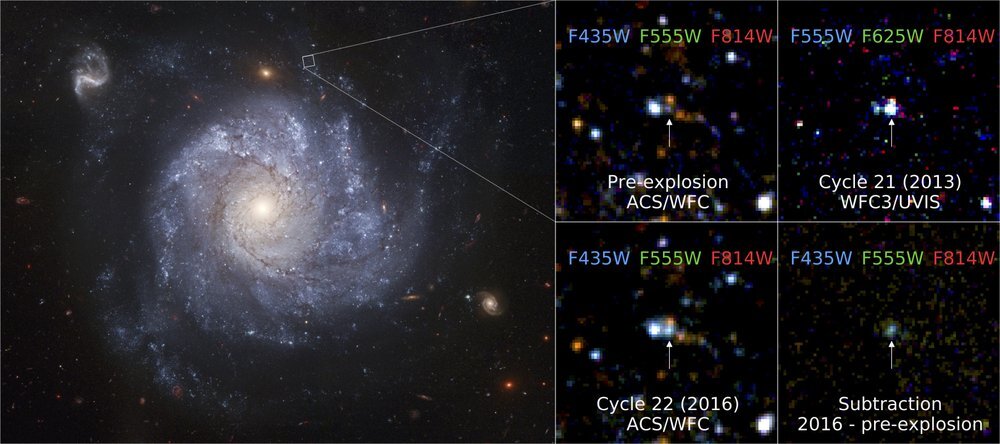The Star That Survived a Supernova
Versão portuguesa disponível aqui
A supernova is the catastrophic explosion of a star. Thermonuclear supernovae, in particular, signal the complete destruction of a white dwarf star, leaving nothing behind. At least that’s what models and observations suggested.
So when a team of astronomers went to look at the site of the peculiar thermonuclear supernova SN 2012Z with the Hubble Space Telescope, they were shocked to discover that the star had survived the explosion. Not only had it survived — the star was even brighter after the supernova than it had been before.

First author Curtis McCully, a postdoctoral researcher at UC Santa Barbara and Las Cumbres Observatory, published these findings in an article in The Astrophysical Journal and presented them at a press conference at the 240th meeting of the American Astronomical Society. The puzzling results give us new information about the origins of some of the most common, yet mysterious, explosions in the universe. […] Read more in the original article: UC Santa Barbara


Leave a Reply